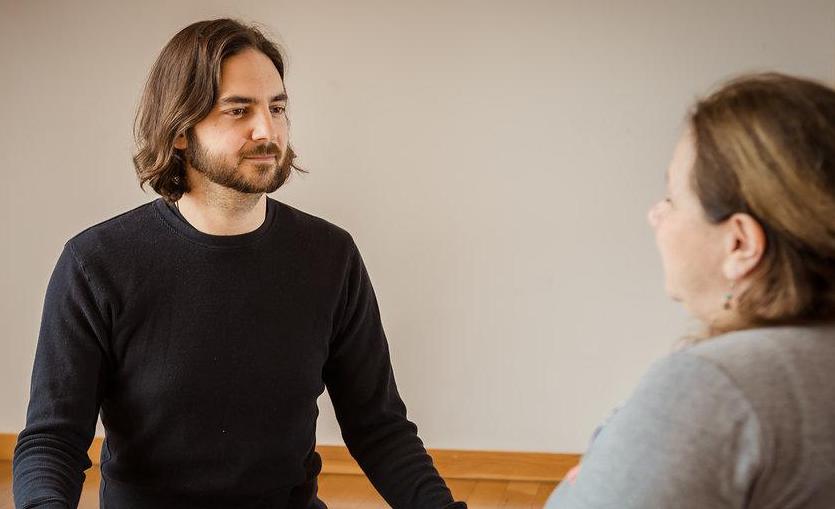Yoga Therapists work with chronic conditions just like other types of therapists. What makes yoga therapists unique is that we’ve been trained to work with both physical and mental conditions. These two things are, after all, not separate in the human system.

In conjunction with this holistic approach, Yoga Therapists also contribute another thing to healthcare:
Relationship.
Unlike a busy doctor quickly examining a patient with only symptoms in mind, a group of physical therapists working to rehab a specific joint, or a psychiatrist prescribing drugs for an acute mental condition, Yoga Therapists spend time with clients discussing a client’s whole story.
The relationship between yoga therapist and client hinges on the therapists ability to spend time with a client. Most sessions are an hour, which allows discussion of a wide range of things. As long as it’s applicable to a client’s condition and the client feels comfortable, therapists will discuss mental states, lifestyle, diet, work conditions, trauma history, and addiction. And physically, we can asses posture, gait, weak and tight muscles, sleep positions, and fascial imbalances.
Sometimes that takes one session. Sometimes it takes more. There is no set protocol, other then creating a respectful relationship so that we can collectively discover the roots of the problem — and see how they interconnect.
Then, we can teach a wide variety of yoga techniques, from movement to meditation, to help our clients ease their own suffering. In other words, once clients have an understanding of all the things that are contributing to their condition, they can take steps to heal themselves.
Here is a real world example of how I helped a client by listening to her whole story:
Sciatica refers to pain that radiates along the path of the sciatic nerve, which branches from your lower back through your hips and buttocks. Not only did I learn through muscle testing that one of my clients with sciatica had weak gluteus and hamstring muscles, I also discovered something she had not realized — the sciatic pain directly corresponded to her quitting smoking 6 months earlier and gaining 10 pounds. Once we strengthened her weak legs through yoga poses like bridge and locust AND helped her lose weight by following some concepts from Peaceful Weight Loss Through Yoga, she got herself out of pain. We also developed for her an at-home yoga practice and she is learning meditation techniques so she can remain a non-smoker.
Yoga Therapists do NOT take the place of doctors, therapists, chiropractors, or physical therapists, but because we do not have hierarchical relationships with our clients, we can often form relationships that help the healing process.
Sometimes we need an outside perspective from someone who has time to listen to find out what is truly causing our suffering. Perhaps a Yoga Therapist at Dragonfly can be that person for you. Contact us to find out.
Om Shanti,
Joe Simek
[email protected]
267.885.8512
Doylestown, PA

Joe Simek is a Certified Yoga Therapist, 500-Hour Level Yoga Teacher, and Co-owner of Dragonfly Yoga Studio. Joe has been practicing yoga for more than a decade, using the wisdom of the teachings to lose weight, get sober, and abandon the corporate grind. In 2012, he formalized his yoga education, completing Dragonfly’s 200 HR Yoga Teacher Training. Joe went on to study Yoga Therapy and Peaceful Weight Loss Through Yoga with Brandt Passalacqua of Breathing Deeply Yoga Therapy (where he is now a Teaching Assistant) and Advanced Vinyasa Yoga with Rolf Gates. In 2016, Joe co-founded The Fiaria Project, a non-profit organization that aids foster children. He is also the frontman of Destroy It Up, an indie rock music project inspired by yoga philosophy. Joe holds a Bachelor of Arts in Journalism from Arizona State University.
